Hello everyone! Here's a quick post for the seaplane challenge.
Or not really... i'll explain it just a second.
-What is this?
So, if anyone has been following me they've probably noticed that i've built (and currently building) some electric cars, well i've recently thought about making electric planes too. But here's the catch, while for an EV car i can use jet engines to make it sound and move like an EV, for a plane i wanted to build actual engines based on the in game rotators since not doing so would feel like cheating, at least personally.
Unfortunately doing this has always been a challenge for me. The last time i made an EV plane was with the R.A. 17, which in retrospect was a pure piece of junk (a painfully slow, hard to control and difficult to use aircraft that i really dislike today and that already got negative feedback back then)
So i went to work on my own motor and i finally settled for an acceptable configuration, so i wanted to use it on a small demonstrator and the seaplane challenge gave me the opportunity i wanted to think about one.
The Engines aren't that much better in terms of power to the ones i used on the R.A. 17 but are surely less shaky and don't tank the performance of the controls.
Overall this is just a simple small seaplane designed to carry light cargo for island hopping.
Also, i wanted to make this plane the most accessable It could be so it's supposedly both VR compatible and Mobile friendly, but if it isn't please let me know so i can edit the tags.
-Controls
You guessed it, In-game instructions!
-Lore
Ever since huge advancements in battery technology made EVs popular cars in the U.S.E. there were companies that were interested in an application for them in air travel. Several start-ups and big aircraft companies wanted to shoot for the stars developing aircrafts powered by electricity, but unfortunately none of them truly succeded. The motors used in those aircraft simply produced too little thrust while the batteries where so heavy that making an electric aircraft was a daunting challenge.
That's where WaterWorks enters the picture. A company partially owned by Markus Aircraft Manifacture relegated to Seaplane constuction, that showed interest in the tech since it could bring some advantages for them, especially having the possibility to remove the need of air-intakes that were at risk to loading up water damaging the engines.
But the company didn't want to work alone, seeing the previous failure of others, so no project went forward. All of this until the Head designer John Aquia met GIAT's founder, Rober Giat, at an airshow event, where the car company showed up to present new concept vehicles inspired by aviation. They chatted for a while and the EV aircraft idea showed up, to which Rober showed much interest until John mentioned the problems they had designing EVs such as weight, low range, low speed; to which Rober responded: "Oh really?... i thought our company fixed those problems years ago!"
followed by John's: "Well, i didn't know your cars could fly, the more you know!".
They both laughed but that brief conversation meant that, in the following months, the two companies got together for the development of a prototype aircraft mounting GIAT made motors and batteries. What started small soon became a big deal for 2 reasons:
1) WaterWorks working on the project meant an involvement from Markus Aircraft which decided to strike a deal with GIAT where if the EV was a success they could collaborate on more electric planes
2) The government was pushing the aviation industry into lowering carbon emissions so designing successful EV aircrafts meant going around those rules without the massive costs of costantly making new generations of regular engines, essentially getting in front of the competition.
The deal was done, and the companies worked together tirelessly on an aircraft that would take the name of the project (E lectric F lying V ehicle). They decided to start small from a simple biplane designed for short distance flight where range wouldn't be a concern using the extremely powerfull motors mounted on racecars by PHONIX. During development there where problems with overheating leading to engine burnouts which thankfully never killed any crew-member testing the plane, but these problems faded as advanced cooling systems, based on the flow of coolant from the motors to the front air vent where outside air would be used to help in keeping the liquid cool, were introduced.
The prototype was shown at airshows all over the country but interest never really took off. The public got used to such prototypes for quite a while so the new model was seen as "one of many", but it was also uninpressive compared to the Airliners, Racers and several other types of concepts.
Everybody expected the plane to suffer a short life and end up in failure, but in reality the conservative design became the key to its success. Other than reducing range concerns such a small plane could mount smaller batteries allowing faster charging and reducing weight, which was also acheaved by reducing components and using light-weight materials; which by the end improved reliability and performance of the engines giving a balance between low energy consumption and high power.
Once in service, several companies and private owners wanted to try out the plane thank to the relatively low price compared to other EV aircrafts (still way higher than comparable combustion powered planes) and promises of low maintenance/running cost, simpler operation and better isolation from water; becoming a popular sight around lakes and seaside locations which allowed GIAT and WaterWorks to recoup the development cost, quickly turning a profit on the vehicles.
Interest started rising for electric aircraft even with fair share of criticism but soon the EFV project was granted permission to keep going and GIAT started working with Markus Aircraft in order to produce models for every major market, from small racing planes to even massive Hybrid SSTs...........

Specifications
Spotlights
- This craft is curated
- YarisSedan 1.8 years ago
- WinsWings 1.8 years ago
General Characteristics
- Predecessor Seaplane Challenge 2/2024 (CLOSED)
- Created On Windows
- Wingspan 47.6ft (14.5m)
- Length 39.7ft (12.1m)
- Height 10.5ft (3.2m)
- Empty Weight 2,596lbs (1,177kg)
- Loaded Weight 2,596lbs (1,177kg)
Performance
- Wing Loading 4.5lbs/ft2 (21.9kg/m2)
- Wing Area 578.5ft2 (53.7m2)
- Drag Points 2649
Parts
- Number of Parts 185
- Control Surfaces 20
- Performance Cost 878

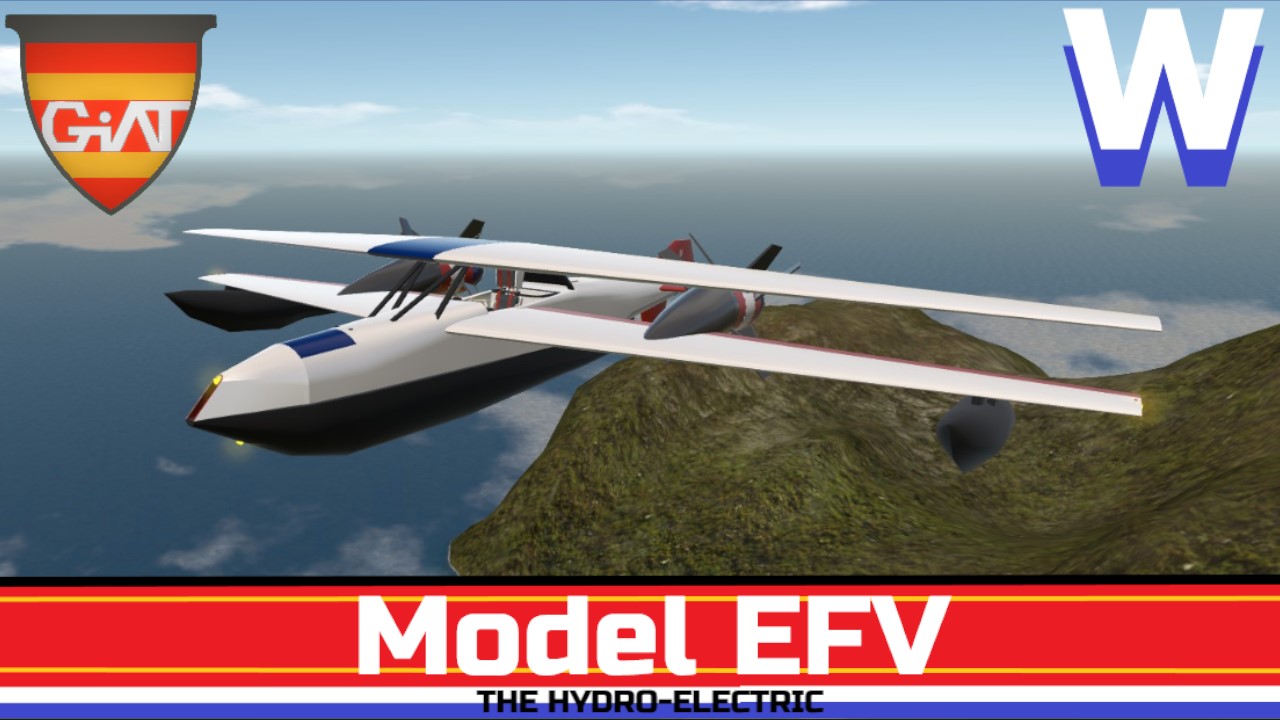

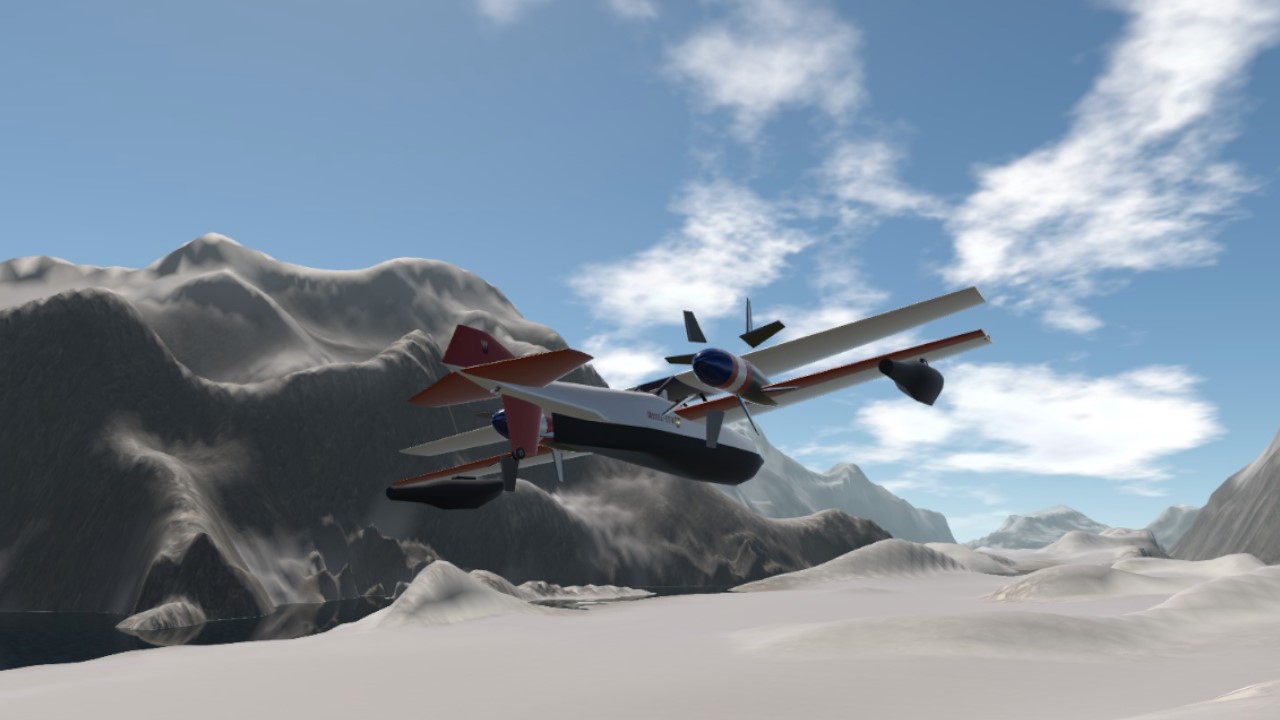
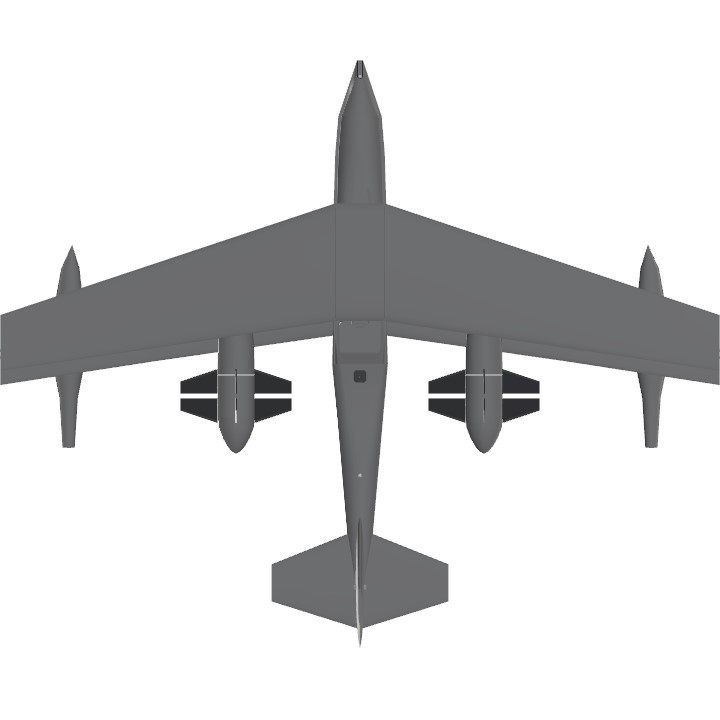
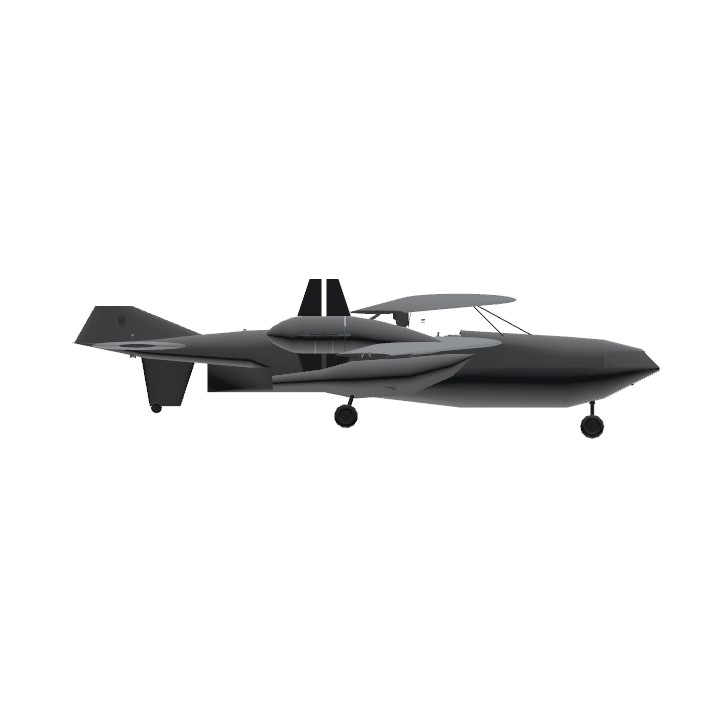
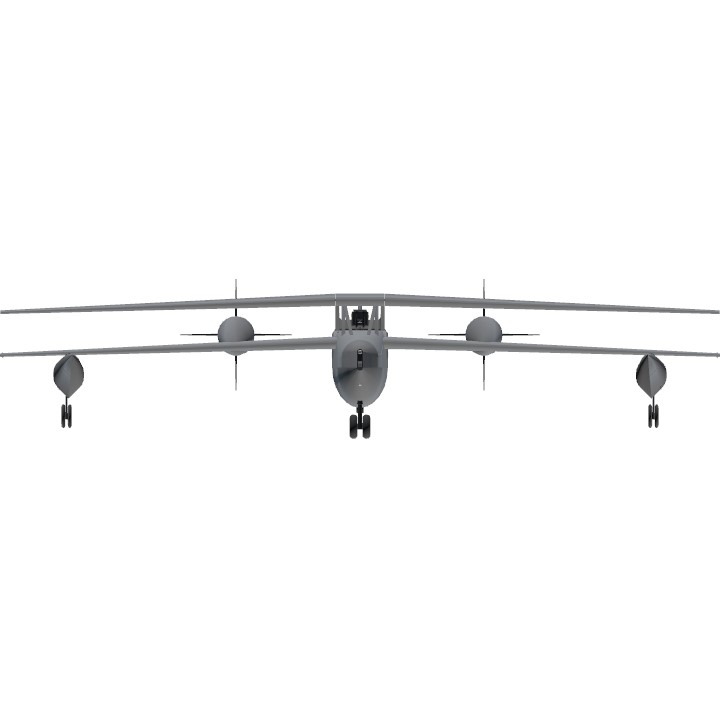
Great job with the concept. I did a similar power source before.
A really awesome concept though
Although I have successfully taken off from land before reading the "Severely prohibited to take off from land" warning through trial and error....
As to how I did it:
Vtol down to full
Gently increase throttle till 72%
Once TAS reaches 70 mph, gently pull the stick back